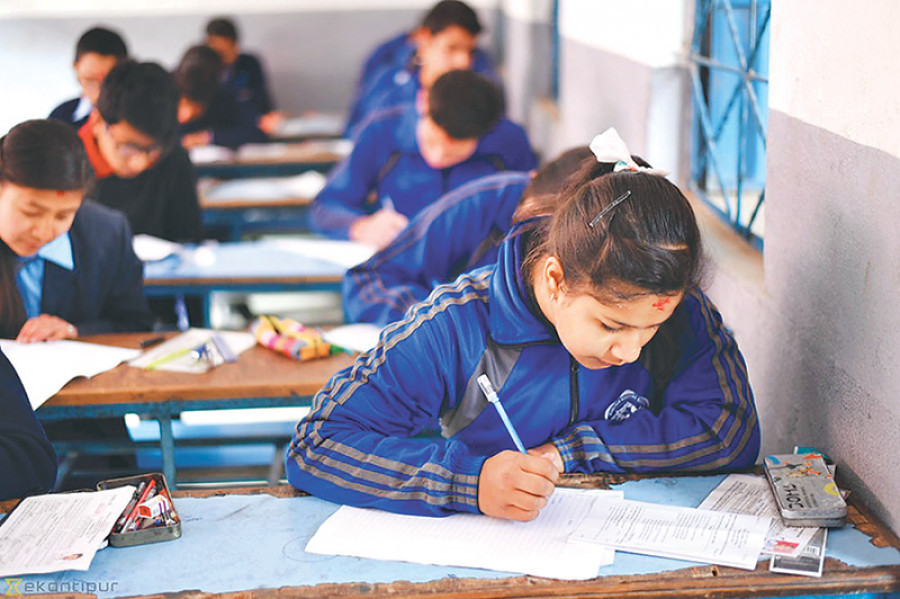Editorial
Better safe than sorry
The risks of contracting the coronavirus indoors are higher compared to outdoors.
As Covid-19 cases double every week in the country, especially in the Kathmandu Valley, more than 430,000 students are preparing to take the grade 12 exams that start on Tuesday. The exams will be held at 4,105 higher secondary schools across the country, and are bound to see a massive movement of teenagers and exam invigilators who will be concerned about their safety as they travel and gather indoors. We should be mindful that this massive gathering is taking place after two big festivals, and government data shows how cases and deaths spiked following the Dashain holidays.
While there are serious concerns that this largest ever indoor gathering of people in the education sector amid the pandemic could be a super-spreader event, officials at the National Examination Board say safety measures are in place to conduct the exams securely, and the examinees needn’t worry about their wellbeing. Earlier this month, Tribhuvan University, which has some 1,100 constituent and affiliated colleges, also published its exam routines for over 415,000 final year students under different faculties, starting December 13.
Similarly, local units across the country are preparing to reopen schools following the government decision to endorse the School Resumption Working Guideline. But as we witnessed last week, when 32 students at a school in Humla tested positive for Covid-19, forcing officials to close all educational institutions in the district, the way ahead is not as convincing as the authorities would like us to believe. The risk levels of contracting the virus are higher, especially in the valley.
Winter is here, and public health agencies worldwide have warned that we have added challenges to contain the spread of the coronavirus. The advent of the flu season, with symptoms similar to that of Covid-19, epidemiologists and scientists warn, increases the risks of contracting the virus as people choose to stay indoors and shut the windows to be warm, minimising the rate of ventilation. This dual-threat of the ‘twindemic’, they say, has the potential to severely impact our fragile situation if public health protocols are not adhered to.
Given our situation, opening schools and conducting sit-in examinations would mean thousands of students and teachers will congregate in classrooms for a prolonged period. Science is clear that this is not safe, and based on this very premise, academic institutions were closed to avoid exposure. Multiple research on the transmission of the virus has discovered that it is particularly persistent in colder temperatures. Respiratory droplets through which the virus primarily spreads have also been found to travel longer distances than the recommended precautionary measure of six-foot physical distancing.
The risks of contracting the coronavirus in an indoor setting, researchers say, are thus higher compared to outdoors. The recent increase in the proportion of older people among new infections in the country is also a possible instance of indoor transmission that should alarm the government and the public. Recent data shows that infection among the highly vulnerable 60-plus age group has more than doubled to 8.1 percent by November 19 compared to 3.9 percent by August 27.
The government cannot gamble with people’s lives. While examinations and resuming schools are necessary, we cannot proceed with foolhardy decisions that jeopardise the health, safety and welfare of the people. A clear assessment by the government and stakeholders, therefore, is necessary before taking any decision that impacts all our lives. Meanwhile, we need to adapt and explore proven alternatives to impart education and conduct examinations in modified formats as practised by universities elsewhere.
***
What do you think?
Dear reader, we’d like to hear from you. We regularly publish letters to the editor on contemporary issues or direct responses to something the Post has recently published. Please send your letters to [email protected] with "Letter to the Editor" in the subject line. Please include your name, location, and a contact address so one of our editors can reach out to you.




 13.12°C Kathmandu
13.12°C Kathmandu














